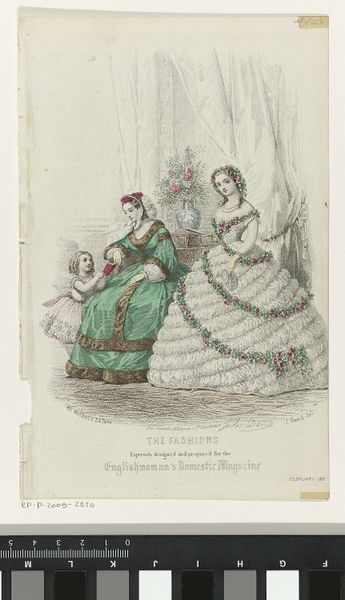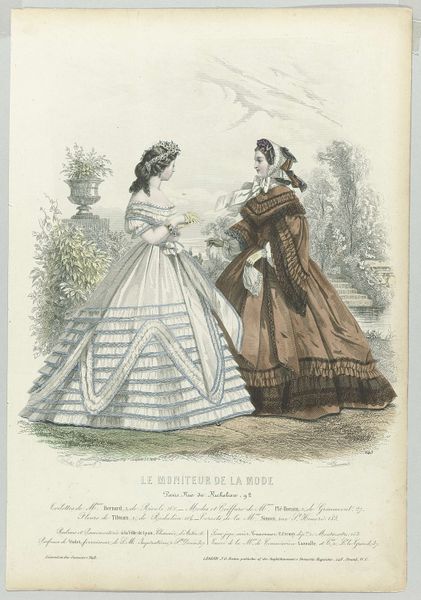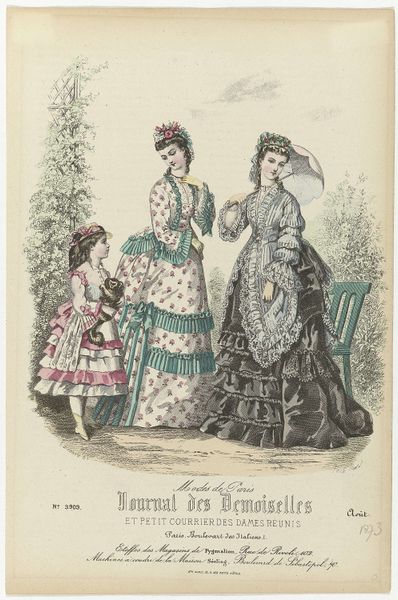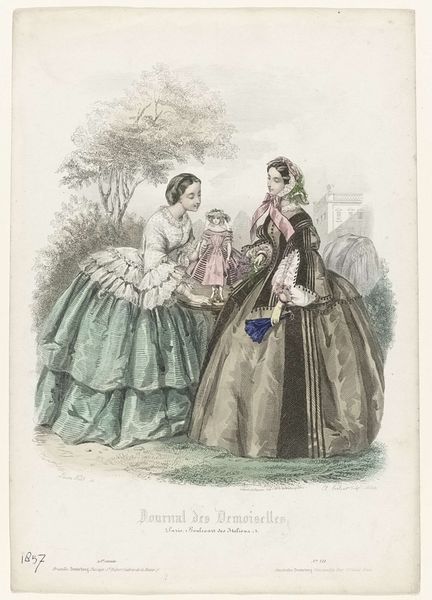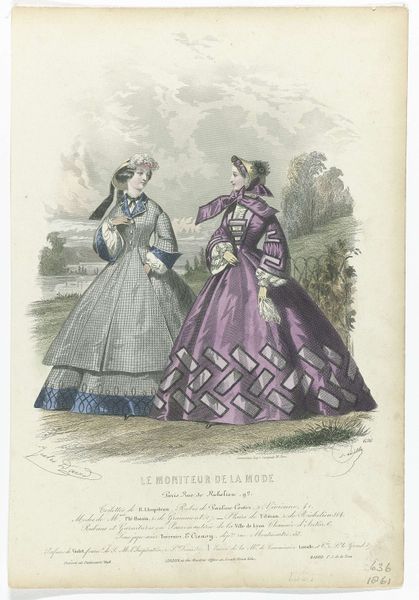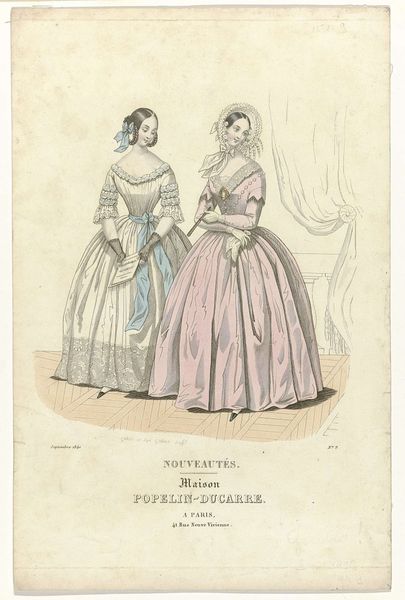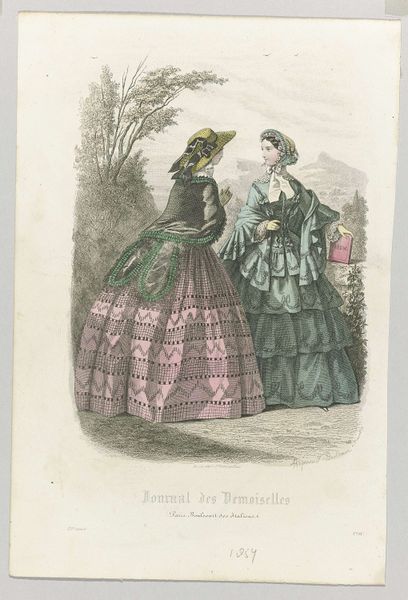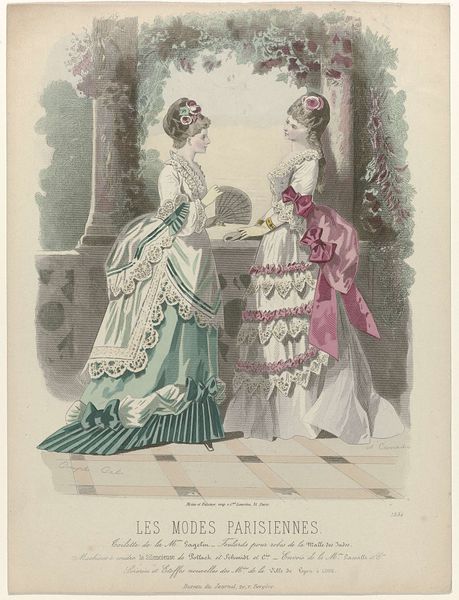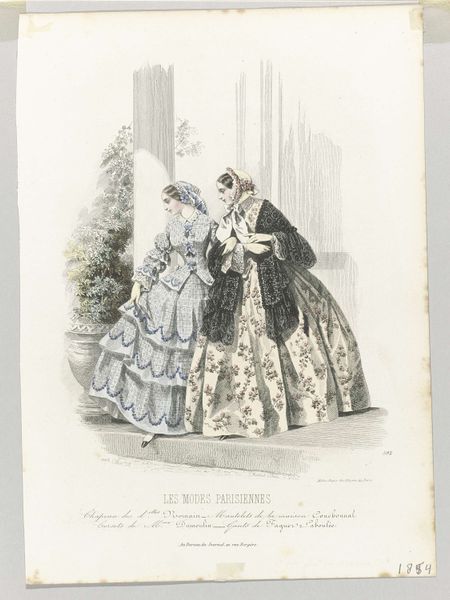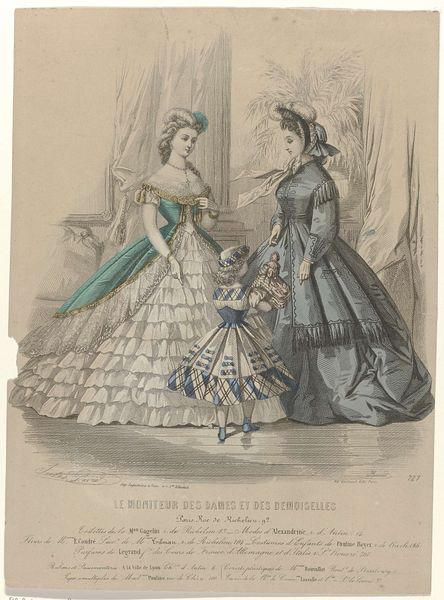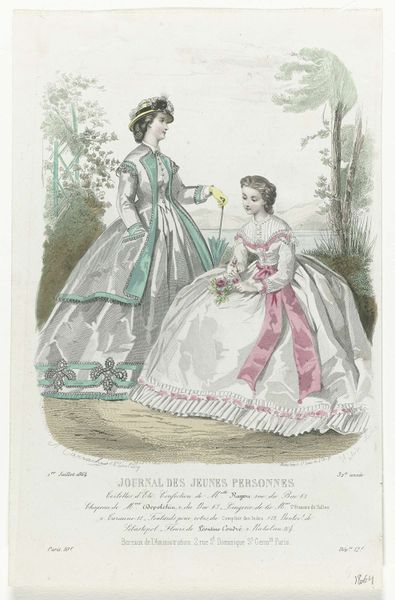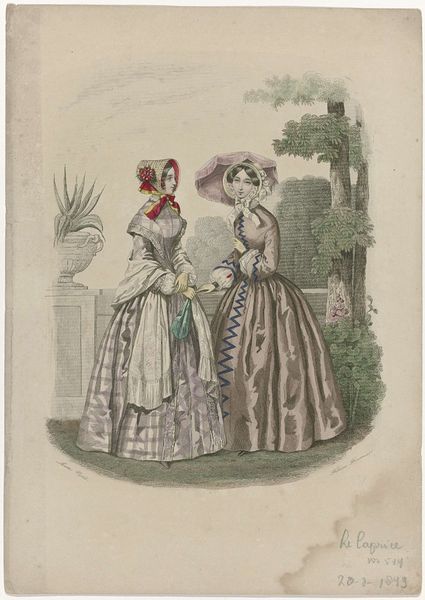
The Englishwoman's Domestic Magazine, June 1868, No. 890 : The Fashions (...) 1868
0:00
0:00
drawing, graphic-art, print, etching
#
portrait
#
drawing
#
graphic-art
# print
#
etching
#
genre-painting
#
dress
Dimensions: height 301 mm, width 221 mm
Copyright: Rijks Museum: Open Domain
Curator: Good morning, let’s turn our attention to a page from "The Englishwoman's Domestic Magazine," dated June 1868. It’s an etching showcasing the latest fashions, signed by Jules David. It really is quite something. Editor: My first impression? So many ruffles! They really went all-out, didn't they? It feels simultaneously opulent and…contained, somehow. The dresses seem to define these women entirely. Curator: Absolutely. The sheer volume of fabric speaks to status and leisure, yet it's so restrictive. Consider the historical context—the Victorian era’s complex relationship with femininity. Fashion became a battleground for control and identity. Editor: Yes, a suffocating ideal! These elaborate dresses and constricted waists visually narrate the limitations placed on women, physically and socially. Beauty as a form of imprisonment, almost. But what's intriguing to me is the suggestion of domesticity in the title, which implies agency, or at least a focus of energy in the household and fashion choices. Curator: The magazine itself sought to educate and entertain women within those domestic confines, but it was also normalizing new possibilities. Fashion, etiquette, even aspects of business… a tightly controlled space, sure, but there was a kind of innovation there, as well. Editor: I see that now. It's almost subversive in a way. They're ostensibly promoting traditional roles, yet the emphasis on self-expression through fashion, the idea of curating one's own image—it nudges at something more. The little girl, perhaps, holding hands with one of the women is very suggestive of this legacy. Curator: And there’s the print itself, etching made for mass consumption. It suggests a democratization of fashion, albeit within a limited sphere. A far cry from haute couture today, of course, but there is a sense of community among the readership. Editor: A fascinating snapshot. Layers of meaning embedded in those layers of ruffles, after all! It has that sense of contained exuberance that seems so typically Victorian, doesn't it? Curator: Indeed. It makes me want to seek out other pages and prints to see what was deemed beautiful at that time. Editor: Right, and I want to read the original magazine! I need to know what articles surrounded those designs! To understand what women thought while eyeing this work of art.
Comments
No comments
Be the first to comment and join the conversation on the ultimate creative platform.
